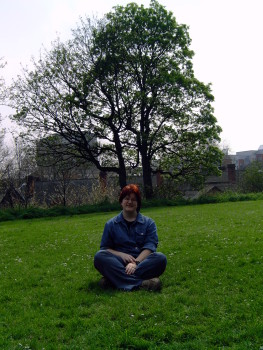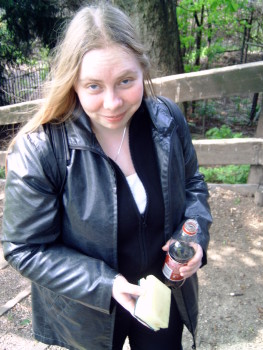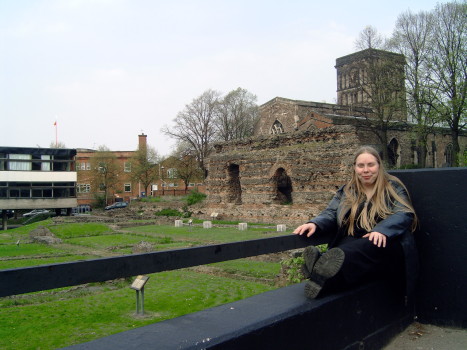Johanna Ripperda
Today was father’s day. Mom was away to spend the day at my aunt’s so I headed over to my parent’s house to hang out with dad. I brought a nice drink and cake and we spend the afternoon watching sports on TV. Not normally something I enjoy, but it was tennis first and show jumping afterwards. Tennis is okayish, but I do love watching show jumping. It was a good day.
Yesterday evening I attended an open air performance in town of a play about the Ripperda’s. The Ripperda’s were an influential family in the area back in the 16th century. Told from the point of view of daughter of the family, Johanna, the play chronicles about 15 years in their lives. The play was comedic in nature and uses modern things in places for humourous effect.

The town square of Winsum, circa 1565. It is market day, except there’s nothing to sell as it is only allowed to sell wares at the market in Groningen. The people are poor, and even the Ripperda’s, in charge of town, are having trouble. Asinge is the eldest, he runs things with help of his brother Peter. They have a sister, Johanna, who is still unmarried. To safeguard their property and interests, Johanna is to be married off. Her husband to be is a German noble who will come for her later.

The coach of the Ripperda’s arrives to bring home the other brothers of the family: Wigbolt and Onno. They have been studying abroad for several years and became Calvinists. This is risky as most of the North is the hands of Catholics at this time. They also brought a friend of theirs, Rennenberg, from Flanders.

The townspeople already hate the citizens of Groningen and the Catholics so they follow the brothers in Calvinism. They lure the Catholic monks from their monastery under the guise of a party in their honor. While the monks are on the square, the monastery is invaded, trashed and emptied of valuables. The monks are then tarred, with cheese, and feathered. Shortly after, Onno and Wigbolt leave to join the war efforts in the 80-year war.
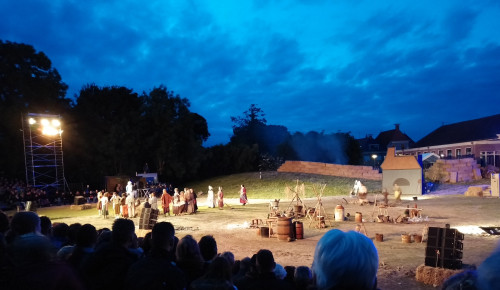
While waiting for Johanna’s fiance to show up, she grew closer to Rennenberg the Fleming. Despite their love being mutual (culminating in a one-night stand). She fulfills her duty and marries Folkmar von Beninga. He’s a fat, older man who smells of bratwurst. His demented old mother has also come along for the wedding. She keeps forgetting why she’s there and does not believe that Folkmar is actually getting married.
After Onno and Wigbolt’s departure, the remaining brothers fight the good fight closer to home. As this is seen as heresy, Asinge and Peter are to be arrested. Luckily, with some advanced warning, the brothers escape. They leave directly after the wedding and go back to Germany with Folkmar and his mother. As the coach is full, Johanna stays behind, promising to come as soon as possible. Folkmar dies shortly after returning home, never having seen his wife again.
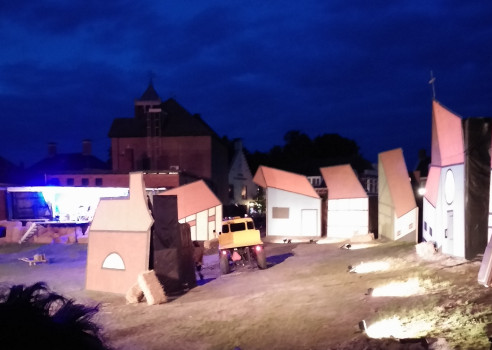
12 years later, it is now 1580. Johanna is the only Ripperda of her generation left. All her brothers have died, all through beheading, either in battle or as punishment. Johanna has a roughly 12 year old son. Everyone thinks he’s Folkmar’s but we all know he’s really the result of the one-night-stand with Rennenberg.
Technically Asinge’s son Focko is the heir to the Ripperda estate. However, he’s mentally not all there so in reality Johanna and her sister-in-law Bauwe run the place. The people of Groningen and the Spaniards are at the doorstep, wanting to annex Winsum. To help fight them, Johanna’s sends a letter to her uncle Johan van Ewsum to come with an army. The mailcoach leaves immediately.

Johan comes to help his niece and brings along a contingent of Scottish warriors. He is ready to fight the Spaniards!
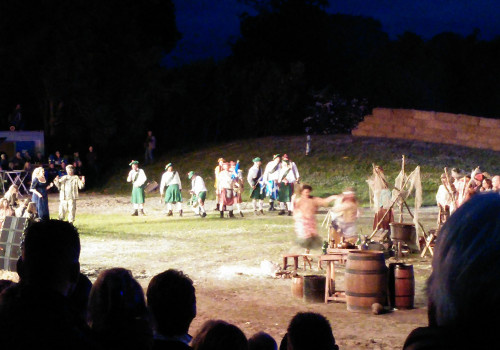
Johanna tries to convince him that he does not need to go into battle, he just needs to defend the town. Johan will not budge, tomorrow they will go.

The Scotsmen get along great with the townspeople. Except they have gone out plundering nearby farms and Johanna is ill pleased with this. After arguing with Johan, he decides to leave to fight the Spaniards elsewhere. A few of the Scotsmen stay behind, though. They have found love 🙂

Rennenberg returns to town. He is stadtholder of Groningen by now and has been sent to annex Winsum, whether they want to, or not. After reuniting with Johanna, he chooses her and the town over Groningen. Groningen retaliates and attacks. The Spanish commander Verdugo invades the town with an army of Frisians. Winsum burns.

The villagers have been corralled off to the side while Verdugo searches for Rennenberg.

Through a ruse the villagers manage to send the cheese monger to warn Rennenberg. The cheese monger gives Rennenberg his clothes so Verdugo won’t recognise him. The next morning, after the Verdugo and his army have left, Rennenberg and Johanna reunite.

Rennenberg proposes to Johanna. Marry him and come live in his manor in Groningen.

Johanna speaks to her son, Hendrik. She tells him the Ripperda’s have a mission. It is their duty to care for the Winsum and its people. To attain good positions in life, make good deals and through this make the town prosper. She refuses Rennenberg, her place is here. Together with Hendrik they will rebuild Winsum.

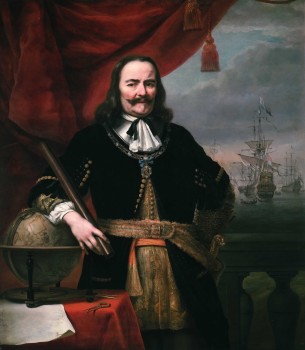



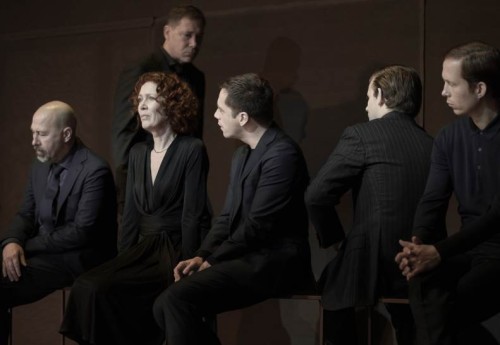 Yesterday I went to see the play Mary Stuart, written by Friedrich Schiller. It was performed by
Yesterday I went to see the play Mary Stuart, written by Friedrich Schiller. It was performed by 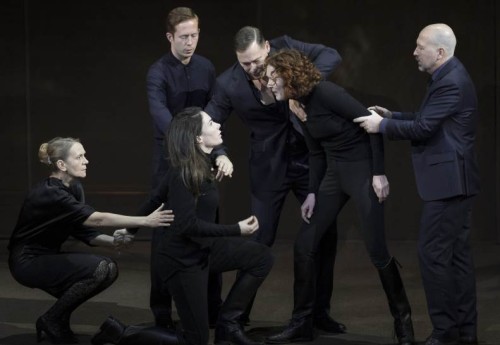 The moment where Elizabeth and Mary meet, even though they never did in real life, is the the best part, performance wise. They speak of their lives as ruling women in a men’s world. About power, about responsibility, loneliness, strength and the perception of weakness, and about personal and public lives. About knowing that they are more than just Elizabeth and Mary, they know these are the moments of History. What they do then and there, is what History will reduce them to.
The moment where Elizabeth and Mary meet, even though they never did in real life, is the the best part, performance wise. They speak of their lives as ruling women in a men’s world. About power, about responsibility, loneliness, strength and the perception of weakness, and about personal and public lives. About knowing that they are more than just Elizabeth and Mary, they know these are the moments of History. What they do then and there, is what History will reduce them to. The only thing I couldn’t really get into was a bit in the middle where Elizabeth goes a walking, and dances in the park with one of her underlings. And since they chose, for the music, an electronic rendition of music of that period, the dance is also a weird, modern thing that I didn’t really like.
The only thing I couldn’t really get into was a bit in the middle where Elizabeth goes a walking, and dances in the park with one of her underlings. And since they chose, for the music, an electronic rendition of music of that period, the dance is also a weird, modern thing that I didn’t really like. The
The  I met up with Jeroen near the station in Assen and we walked to the Museum. Along the way it started raining, and it got so bad we stopped for about ten minutes to hide out under an overhang in front of a realtor’s office.
I met up with Jeroen near the station in Assen and we walked to the Museum. Along the way it started raining, and it got so bad we stopped for about ten minutes to hide out under an overhang in front of a realtor’s office. There were many educational wall panels detailing mummification and its rituals through the ages, which was very interesting to read and see. The floor layout was bit weird as it all circled around which led to some confusion at some points which way to go and what we had already seen.
There were many educational wall panels detailing mummification and its rituals through the ages, which was very interesting to read and see. The floor layout was bit weird as it all circled around which led to some confusion at some points which way to go and what we had already seen. The Future Trilogy by Thea Beckman: Kinderen van Moeder Aarde, Het Helse Paradijs & Het Gulden Vlies van Thule.
The Future Trilogy by Thea Beckman: Kinderen van Moeder Aarde, Het Helse Paradijs & Het Gulden Vlies van Thule. The Discworld series by Terry Pratchett.
The Discworld series by Terry Pratchett. The Belgariad/Malloreon series by David Eddings.
The Belgariad/Malloreon series by David Eddings. The Giver
The Giver Articles of the Federation, by Keith R.A. DeCandido.
Articles of the Federation, by Keith R.A. DeCandido. Little Women by Louisa May Alcott
Little Women by Louisa May Alcott Dinotopia by James Gurney
Dinotopia by James Gurney Rowan, een verhaal uit de middeleeuwen, by Henk Kroesveld
Rowan, een verhaal uit de middeleeuwen, by Henk Kroesveld Tigana
Tigana Vrijheid als prijs
Vrijheid als prijs
 So, I went to re-enact the Iron age over the weekend at a festival. I’ve still got everything jumbling around in my head so not really a proper telling in story order, more this was awesome and this was awesome kinda bulletpoints.
So, I went to re-enact the Iron age over the weekend at a festival. I’ve still got everything jumbling around in my head so not really a proper telling in story order, more this was awesome and this was awesome kinda bulletpoints. It was insanely warm the two days and my hair was really getting in the way. Too long in the neck and hanging in my eyes near the sides. So I asked Eva if she would cut it, Iron age style 😀
It was insanely warm the two days and my hair was really getting in the way. Too long in the neck and hanging in my eyes near the sides. So I asked Eva if she would cut it, Iron age style 😀 Sunday we finished the job with the front end.
Sunday we finished the job with the front end.









